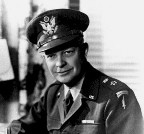MarkShot
Posts: 7089
Joined: 3/29/2003
Status: offline

|
Alright, I have been experimenting with the START and END times you saw earlier. Some of this is from reading the manual and quite a bit is from playing with it in the game. (the type of insights which can only be gotten at 3am)
START is the time at which you want the movement portion of an order to begin. So, in COTA, you might have been defending a timed objective which expires and you want to pull your forces out as soon as darkness falls. You may have already reached that conclusion at 08:00, but you'll have to wait to say 14:00 to issue your orders or your force will move out prematurely. Or you may forget in the heat of battle and you will lose some of the cover of darkness. With START in BFTB, you can issue that order at 08:00 such that it will be executed at 19:00.
END is the time at which you want an order to stop dead in its tracks. Effectively the order stands, but movement appears to come to a halt. Why would you use END? Well, here is one reason I can think of. You want to avoid superior arty and airpower during the day time hours. So, you only want to move under the cover of darkness. It is hard to gauge just how much ground you will be able to cover in a particular night. So, basically, before sunrise, say 05:00, you want to halt in place and begin diggin in. You may ask can you adjust the time later to continue the movement? No. The task marker upon END effectively snaps to the current location and ends any further movement.
ASSAULT (only for Attacks and Probes) is the time at which the ASSAULT begins from the FUP.
Before discussing these further, let's talk about the one strange exception to all this. Arty/mortar units. If given a movement style order these parameters will impact arty/mortar units just like has been described. However, if they are given a Bombard order, then these fields are used to specify the START and END time of the barrage. You still have the DURATION field to play with which was in COTA. However, START and END will allow to coordinate a barrage with a larger action ... without having to manually time everything.
So, as you can clearly see, you can use START/END/ASSAULT in a complex environment to:
(1) Coordinate plans between different forces. For example: a two axis simultaneous Attack. For example: a Probe feint followed by the main Attack in three hours. There are a whole host of possibilities besides the games I cited above with movement.
(2) Formulate plans when they come into your mind as opposed to having to remember them until the critical moment.
Here is another trick which I just tried that works rather nicely. You can create pended orders. Suppose for example, you know you want a force to move North 10km. However, you do not want them to do that until you have conducted recon of the route. But if you wait for the recon of the route to issue the order, it could take hours for them to move out. So, you issue the orders with a START way into the future. As soon as you are satisfied that the route is clear, you move the START up. Thus, you can set up orders for forces where they will hold in place and then execute immediately when given the green light.
Finally, there is one more feature of this which I want to discuss and then I got to get some sleep. What is the default START time? How is it derived? From experimentation, I have determined that the default START time is NOW + FORCE DELAY. If you will recall from my previous guides, the FORCE DELAY is not accurate until the FORCE is stable and there has been one complete propagation of orders. (This is one reason I usually group my forces and then keep them at fighting units. After some initial guessing, it gives me very good knowledge of what delays will be.) So, the START time for a newly formed force will actually default to some HQ's UNIT DELAY, since the FORCE DELAY is unavailable. Thus, the START default will be way too optimistic and you will simply miss it.
So, for a newly formed force, you are going to have to guestimate what would be the FORCE DELAY and come up with an earliest START and then pick something later. Of course, if you just want to go ASAP, then don't mess with the defaulted value. The important thing is that that default START value will not be of much utility until the force is stable and there has been one propagation of orders.
---
Well, I hope you guys are paying attention to this Mini-Guide and not just considering it to be a preview copy and paste of the manual. Since START/END/ASSAULT only gets two paragraphs in the manual compared to the depth we have covered them here. In the business of business, this is what we call "value added".
Now, it's time for me to catch some Zs before tomorrow's operations begin! :)
_____________________________
(於 11/13/21 台北,台灣,中國退休)
|
 Printable Version
Printable Version

















 New Messages
New Messages No New Messages
No New Messages Hot Topic w/ New Messages
Hot Topic w/ New Messages Hot Topic w/o New Messages
Hot Topic w/o New Messages Locked w/ New Messages
Locked w/ New Messages Locked w/o New Messages
Locked w/o New Messages Post New Thread
Post New Thread